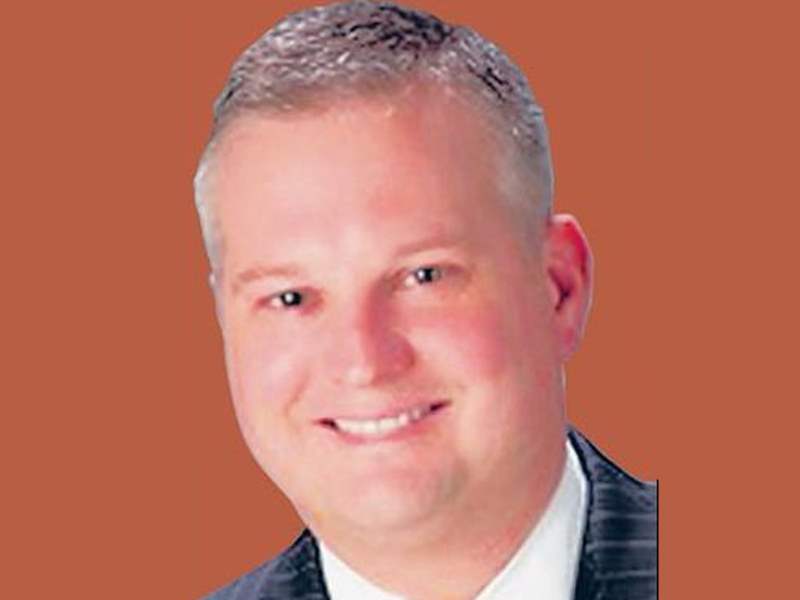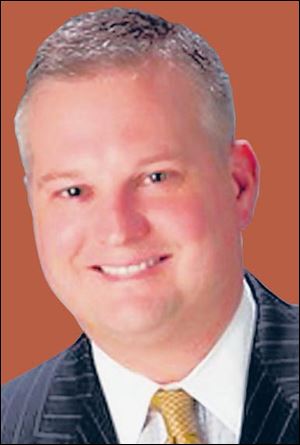
New innovative treatment for sinus problems
7/18/2011

Dr. Christopher Perry
This is one of a series of columns about health issues written by staff members of ProMedica, Mercy Health Partners, Toledo Clinic, and the University of Toledo Medical Center, the former Medical College of Ohio.
Sinusitis is one of the most common chronic healthcare problems in the United States, afflicting 37 million Americans annually.
Nasal congestion and drainage, sinus pressure, and headaches are common symptoms. Chronic sinusitis significantly can impact someone physically and emotionally and affect one's overall quality of life. Common causes of chronic sinusitis range from uncontrolled seasonal allergies, immune related factors, or simply congenital narrowing of the nasal and sinus passageways.
Until recently, treatment had been limited to medical therapy with antibiotics, antihistamines, and decongestants or conventional sinus surgery which often was painful and required a lengthy recovery. Medications still are the first line treatment and are usually effective, but for 20 to 25 percent of patients, even multiple courses of increasingly more potent antibiotics or other medications might not be enough to relieve their persistent or recurrent symptoms. For these patients, sinus surgery is often their last hope in finding relief.
Over the recent years, breakthroughs in medical technology have improved the ear, nose, and throat (ENT) surgeons' ability to see inside the nose with fiberoptic endoscopes as well as lower the risk of complications of surgery with computer guided systems to safely navigate through difficult sinus anatomy.
Now patients suffering from chronic sinusitis might be able to find relief and reclaim a better quality of life through a state of the art endoscopic surgical procedure called Balloon Sinuplasty. This system was first implemented about seven years ago and has increased in popularity over the last several years.
During the balloon sinuplasty procedure, a small, flexible balloon catheter is inserted through the nose, into the opening of the affected sinus, and inflated to remodel the obstructed sinus passageway, effectively restoring normal sinus function. In essence, the technique is similar to balloon angioplasty used to open narrowed blood vessels around the heart. Conventional sinus surgery involves the removal of bone and soft tissue around the sinus openings, often requiring uncomfortable nasal packing and an extended recovery. Balloon sinuplasty does not involve the removal of bone or soft tissue and works by simply restructuring the sinus passageways, which means much less pain, and a faster recovery, with no need for nasal packing. Most patients return to work within several days of undergoing the procedure.
Since balloon sinuplasty was first developed, the procedure has been performed in the operating room with the patient asleep under general anesthesia. Now the technology is available to allow ENT surgeons to quickly and virtually painlessly perform balloon sinuplasty in the office while the patient is awake. This allows the patient to experience faster relief with no risk of anesthesia and with no down time. The in-office procedure is similar to a root canal performed in a dentist's office. While this might seem unpleasant, this still is appealing to many chronic sinus sufferers unwilling or unable to undergo a procedure under anesthesia.
Balloon sinuplasty also is just as effective as conventional sinus surgery at relieving the symptoms of chronic sinusitis. In fact, studies have demonstrated that in more than 95 percent of patients, the sinus passageways stay open indefinitely. What really tips the scales in favor of balloon sinuplasty is that it is significantly safer than conventional sinus surgery, with a lower risk of inadvertent damage to the eyes or brain.
Balloon sinuplasty allows the patient and the ENT surgeon to proceed with the procedure with a greater sense of optimism that the patient will feel better and experience an improved quality of life after surgery.
Although balloon sinuplasty is not for everyone, ENT surgeons now have a new, unique procedure to offer patients to provide relief from the debilitating symptoms of chronic sinusitis, and enjoy their lives.
Dr. Christopher Perry is the co-founder of the Toledo Clinic ENT Sinus Center of Excellence. Dr. Perry specializes in cosmetic and functional nasal and sinus surgery. He has been in practice in the Toledo area for seven years. Dr. Perry is double-board certified in facial plastic surgery and otolaryngology (ENT). For more information about Dr. Perry or the Toledo Clinic ENT Sinus Center of Excellence please visit ToledoClinic.com.